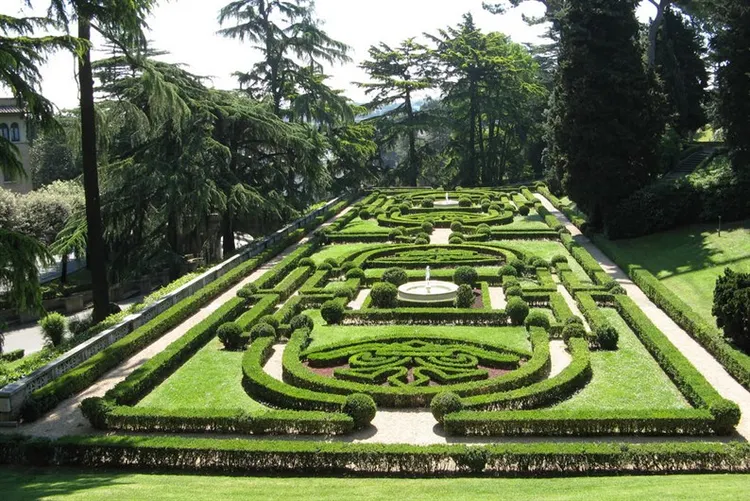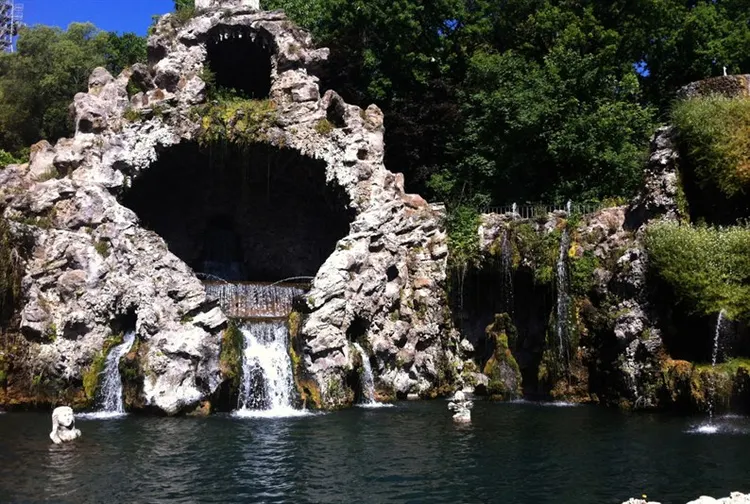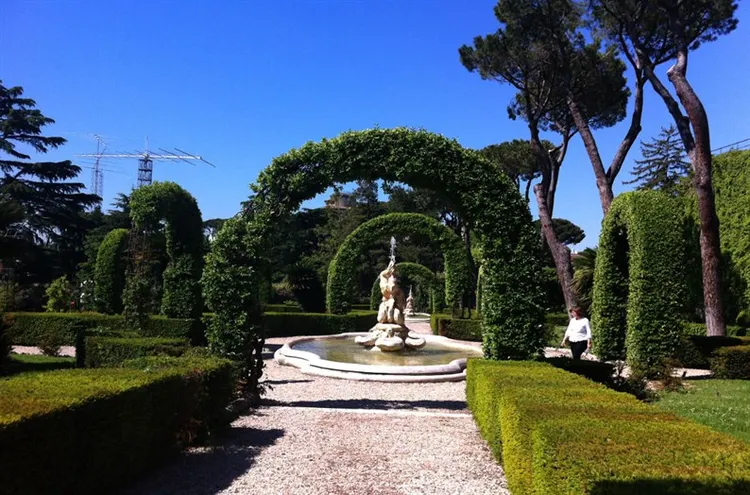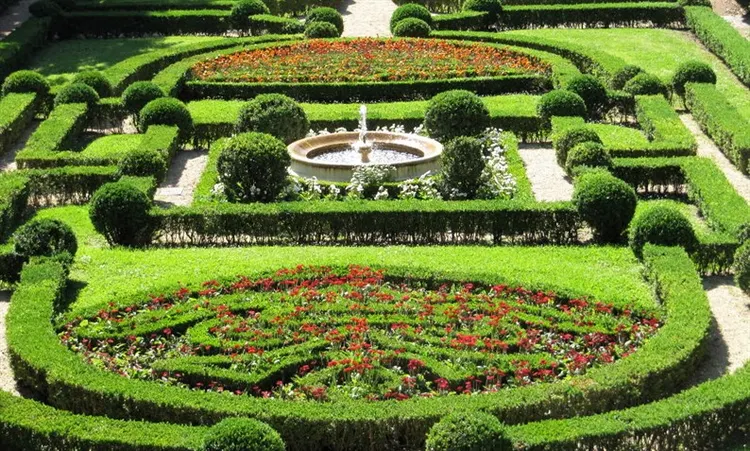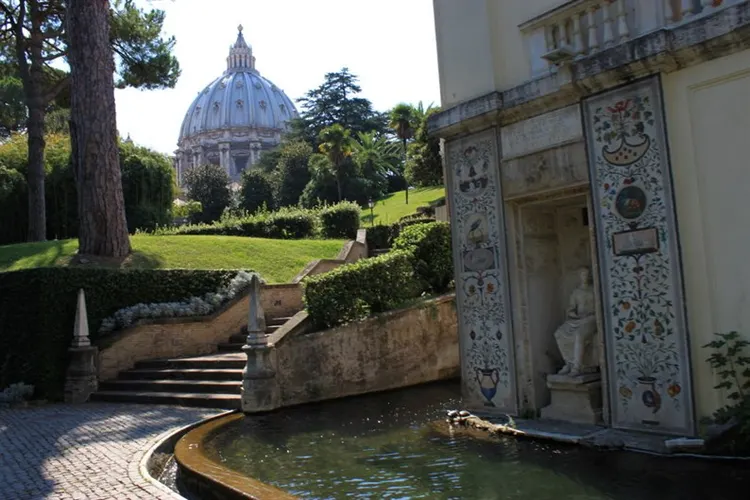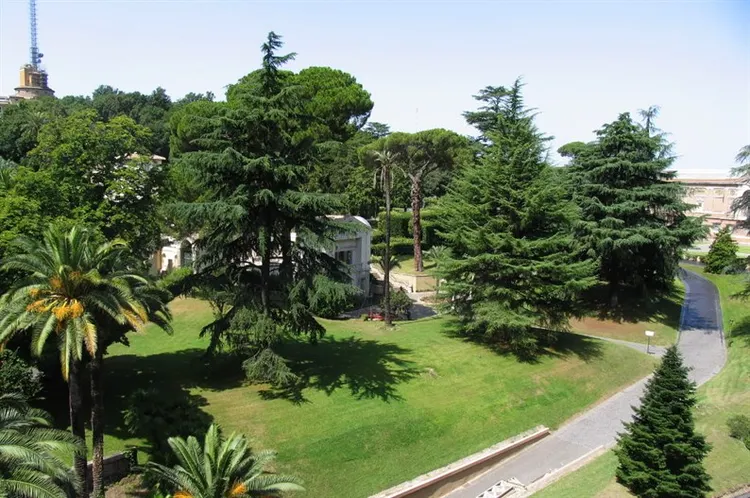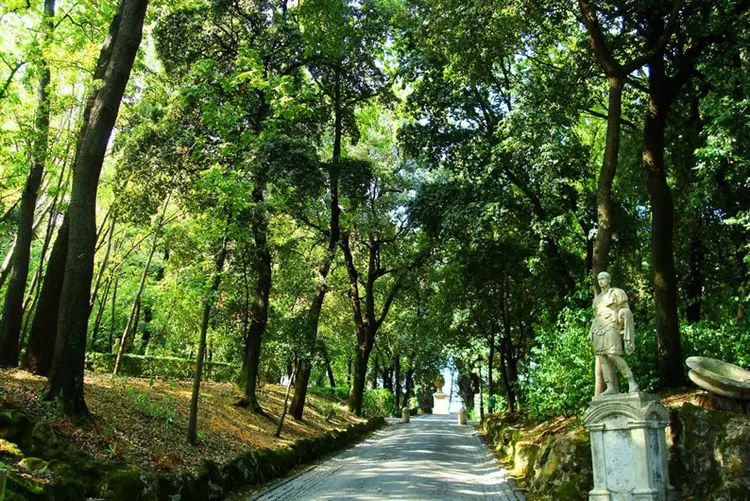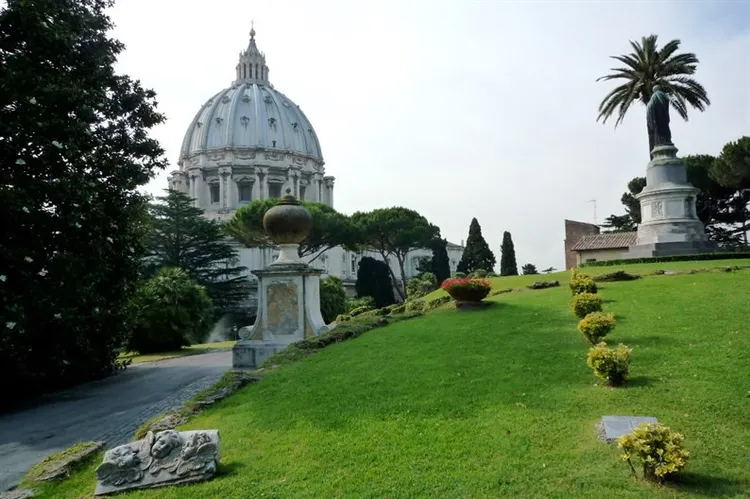The meeting with the Pope, of course, should not take place here, but in life everything is possible. After all, it is along the paths of this garden that Pope Francis walks and jog. And before him, it was done for several centuries by those who remained in history forever. Walking along these paths, they talked with God. In the gardens of the Vatican, it is impossible to think about the bad. All this splendor is created so that the body rests and the soul sings.
How Gardens Came to Be
The Vatican, as a state, was recognized in 1929, but its history began a very long time ago. This place was considered holy for more than three hundred years after the birth of Christ, so people did not live here. In 326, a basilica was built on the burial site of St. Peter, who was the first head of the Christian church. After that, people began to come and settle here to be closer to God. The gardens of the Vatican were founded by Pope Nicholas III, who built a new palace in the Vatican in the 13th century and made the first plantings. Originally there was a garden of medicinal plants. Over the following centuries, each pontiff contributed something of his own to the design of this part of the Vatican.
A place to relax and love work
The Pope has to work almost around the clock, so everything possible has been created here for outdoor recreation. Yes, and the inhabitants of this smallest state prefer their green wealth to the bustle of the city. Any subject has his favorite corner, where someone prays and talks to God, and someone just relaxes in the fresh air. 30 gardeners are doing their favorite work in this delightful corner of the Vatican, which occupies almost half of the state – about 23 hectares. Not a single plant is forgotten here and thanks for the care with its lush greenery or abundant and long flowering. This is facilitated by the Vatican Hills, located very conveniently. All plants are on their southern side and are protected from the winds by the famous wall, which is now almost completely covered with ivy from bottom to top, and does not look like an awesome stone block.
In any, even dry, summer, nature here is fragrant thanks to the automatic irrigation system. Water became plentiful after an aqueduct was built in the 17th century, supplying water from a lake located 40 kilometers away.
Every corner has its own era
The gardens were not originally planned as a single ensemble. No one sat down at the table and drew up their plan. Therefore, here every corner is its own era. Finding a place to relax and contemplate in this earthly paradise is not difficult. Pope Pius IV was a lover of landscape art and built several buildings during his reign. He surrounded them with fountains and waterfalls. In the 17th century, Pope Clement XI was fond of breeding rare subtropical plants. For this, a corner was created under the cover of a wall that would protect them from the winds. Over time, it turned into a whole forest of exotic plants, which, at the behest of man, coexist perfectly here. A banana tree and a flowering oleander are nowhere in nature you will find in the neighborhood. And here everything is possible.
English garden
The English garden, where Pope Francis likes to run in the morning, is beautiful with its small waterfall – an exact copy of the real one. There are also many statues and columns, picturesque fragments covered with greenery of centuries. It would seem that they are scattered randomly, but there is no discomfort in the perception of this picture, so skillfully the hand of the landscape architect entered them into this landscape.
Italian garden
The chief gardener of the Vatican gardens notes the beauty of the Italian Garden with its lush vegetation and rare species. The unique red locust tree has cockscomb-like flowers and blooms nine months of the year. In this part of the gardens, azaleas bloom luxuriantly, planted in pots, placed on stands and right on the ground. Clay vessels, seemingly scattered in disorder, give this landscape an antiquity.
french gardens
The hallmark of this magnificence is the French gardens, the highlight of which are the green arches, located in many over the paths. The job of the gardeners here is to keep them in perfect condition. The yew that wraps around these arches needs to be cut regularly, as do the many borders of this plant that frame the lawns. The same plant is the basis for beautiful compositions, which are the highest aerobatics of topiary art.
From the point of view of landscape art, the gardens of the Vatican are not an example. Many note the excessive eclecticism of gardens, that is, a mixture of different styles. But that's the beauty of it. Where else can you find blooming magnolias, cacti of various colors, evergreen trees, cedars and African palm trees in the same garden. Despite the fact that all this diversity feels great. African green parrots that live in this garden and build their nests look like birds of paradise. It must be seen, felt and inhaled by all cells of the soul and body!
A true garden of paradise!
How to get to the Vatican Gardens
Unlike the Vatican Museums, where everyone can almost always get in, the gardens can only be entered as part of a group. There are few such groups, since after all this state is the current residence of the pope. For its safety, only a limited number of groups are created at a strictly defined time. Many people dream of visiting this paradise. This must be taken care of in advance. On the official website of the Vatican, you can buy a ticket online, then exchange it for a paper copy at the entrance and …
Visiting rules and recommendations for tourists
In order not to be excruciatingly painful that time is wasted, it is necessary to prepare for this action in advance. It is not advisable to go to the Vatican in overly open clothes. Let it be better light, weightless and natural. Then light, spacious trousers and a shirt will not be a burden to you even in the heat. You can't tear anything in the garden, lag far behind the guide and take pictures of the Swiss guards, who are the personal army of the Pope and his guards. The same security will search you at the entrance. No need to take with you overall things, knives, tripods. You can enjoy the scenery and take pictures, capture, remember. Take a spare memory card and charge the camera.
How to get on your own
Fiumicino International Airport receives flights from all over the world. Buses or electric trains run directly from the airport to Termini Station in Rome. There is a subway under the station. Take line A to the Ottaviano-San Pietro station, from there 10 minutes walk to St. Peter's Square. Bus number 64 departs from Rome Station (Stazione Termini), number 60 from Republic Square (Repubblica). Just ask the driver: “Vaticano?”. Hiking trails for those staying in Rome itself are the best way to get to the Vatican. Here all roads lead to the heart of the capital.
Welcome to the Garden of Eden!
